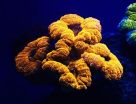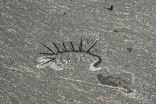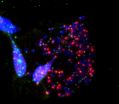The study, published online June 18 in Chest, tracked more than 1,700 California residents with cystic fibrosis. Between 1991 and 2010, Hispanic CF patients were almost three times as likely to die as non-Hispanic CF patients, the study found. The gap in survival existed in spite of the fact that both groups visited CF specialty clinics equally often. Furthermore, the study uncovered genetic differences between the two groups that may have put Hispanic patients at a disadvantage when it came to being able to benefit from new CF therapies.
"We need to ask if the care model for patients with CF is working for this minority group," said MyMy Buu, MD, the study's lead author and an instructor in pediatric pulmonary medicine. "We want to make sure that what we are doing is not inadvertently causing disparities." Buu is also a pediatric pulmonologist who cares for children with cystic fibrosis at Lucile Packard Children's Hospital Stanford.
"Given that CF is now identified shortly after birth through newborn screening in California, our study calls for an urgent need to identify the factors involved in this disparity," said Carlos Milla, MD, associate professor of pediatrics and co-senior author of the study. "This will be crucial to develop treatment regimens that guarantee that all children with CF can benefit from early diagnosis and the novel treatments being introduced." Milla also directs the Stanford Cystic Fibrosis Center.
Cystic fibrosis is a genetic disease that causes serious lung and digestive problems. Although it used to kill most patients in childhood, new treatments have dramatically improved survival rates. Today, more than half of CF patients in the United States live past age 40. The drug Ivacaftor, which greatly improves lung function for the 4 percent of CF patients who share one specific mutation in the disease-causing gene, became the first CF medication to treat the cause of the disease rather than its symptoms when it was approved in 2012.
Eliminating possible explanations
Buu's team used data from the Cystic Fibrosis Foundation's patient registry, examining all California residents who were diagnosed as children during the study period of 1991-2010. Of the 1,719 patients studied, 28 percent were Hispanic. California has the largest proportion of Hispanic CF patients in the United States; nationally, about 7 percent of CF patients are Hispanic.
During the study period, 9.1 percent of the Hispanic patients and 3.3 percent of the non-Hispanic patients died.
From the data, the researchers were able to eliminate a number of possible explanations for the difference in mortality rate. For instance, Hispanic patients were not being diagnosed late, were not sicker at the time of diagnosis and did not lack access to CF specialty centers; rather, they were diagnosed at the same age as non-Hispanic patients, started out equally ill and used specialty care equally often. Hispanic and non-Hispanic patients also had the same rates of CF complications, such as bacterial infections of the lung and CF-related diabetes.
However, the researchers did find important clinical and social differences between the groups. At age 6, the earliest that lung function is routinely and reliably measured for patients with CF, Hispanic children with CF had worse lung function than non-Hispanic kids with the disease. The gap in lung function persisted as the children aged, although it did not widen. And although the same proportion of patients in both groups eventually developed CF complications, the complications struck Hispanic patients earlier in life. Hispanic patients lived in poorer neighborhoods and were more likely to be covered by public health insurance than their non-Hispanic counterparts.
The research also showed that, between the two groups, different mutations prevailed in the disease-causing gene, which is called the CF transmembrane conductance regulator gene. Hispanic patients tended to have rare and poorly characterized mutations in their CFTR gene, whereas non-Hispanic patients had more common mutations that have been more extensively researched.
Looking ahead
"We are moving in the direction of gene-mutation-directed therapy," Buu said. "The CF research community is trying to understand these mutations, and those that are most frequent in the whole CF population are being studied first." This puts Hispanic patients with rarer mutations at a disadvantage in terms of being able to benefit from new therapies, she said. "It will take longer to get to them, but there are efforts to understand all the mutations of the CFTR gene."
The next step, Buu said, is to try to identify the factors that appear to contribute to the higher mortality rate among Hispanic CF patients so that effective interventions could be implemented early. For instance, Buu's team wants to investigate why lung function is lower in young Hispanic CF patients, as well as how the onset of CF complications could be delayed in Hispanic children.
"We hope to create awareness of this disparity, and we hope that it is modifiable," she said.
INFORMATION:
Other Stanford-affiliated co-authors of the study are Lee Sanders, MD, associate professor of pediatrics; Jonathan Mayo, data analyst in pediatrics; and Paul Wise, MD, professor of pediatrics. Milla and Sanders are members of Stanford's Child Health Research Institute.
The research was funded by the Cystic Fibrosis Foundation, the Ernest and Amelia Gallo Endowed Postdoctoral Fellowship, the Lucile Packard Foundation for Children's Health, the National Institutes of Health (grant UL1TR001085 for Stanford's Clinical and Translational Sciences Award), and the Child Health Research Institute.
Information about Stanford's Department of Pediatrics, which also supported the work, is available at http://pediatrics.stanford.edu.
The Stanford University School of Medicine consistently ranks among the nation's top medical schools, integrating research, medical education, patient care and community service. For more news about the school, please visit http://med.stanford.edu/school.html. The medical school is part of Stanford Medicine, which includes Stanford Health Care and Lucile Packard Children's Hospital Stanford. For information about all three, please visit http://med.stanford.edu.



